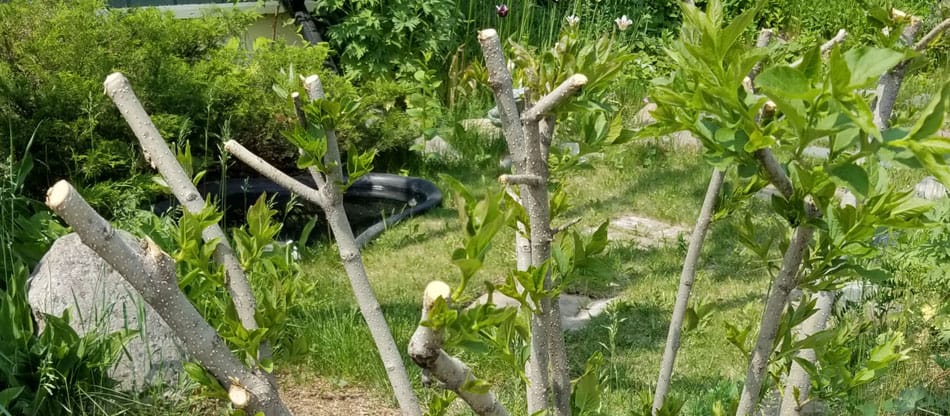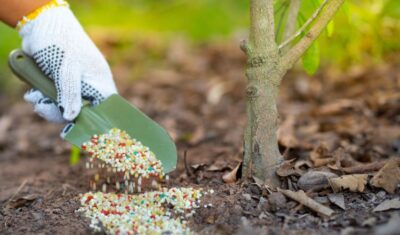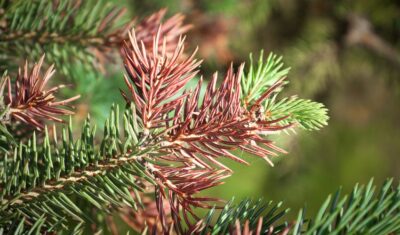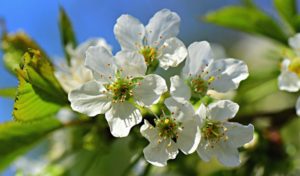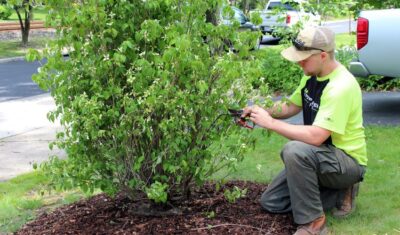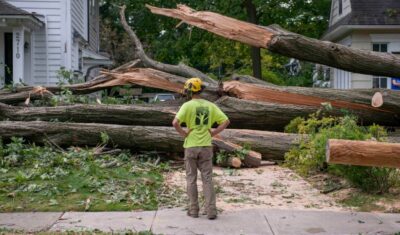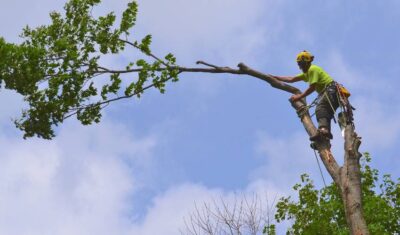Avoiding pruning mistakes is easy when you know the proper pruning techniques and, more importantly, why you’re pruning a tree or shrub.
Tree and shrub pruning is done for several reasons, such as reducing the size of the plant, opening up the canopy, removing obstructions, enhancing its shape, and removing dead or damaged growth. No matter the reason, pruning must be done correctly to ensure the tree or shrub’s health and continuing vigor.
Arborists and aesthetic pruners are trained to understand the growth patterns and physical structure of trees and shrubs. They first evaluate the plant’s overall form, then remove or modify only those branches that are a risk to plant health, a hazard for people or property, or which detract from overall form and character. As every pruning cut is a wound to the plant, one key to successful pruning is to do as little cutting as possible to achieve the desired outcome. The result is a naturally shaped, vigorous plant.
Prune at the Proper Time
You should first know if you are pruning at the right time of year.
Winter pruning has many benefits. Winter is the dormant season for plants and trees in northeast Ohio and is an excellent time to prune most trees and shrubs. Not only is it less stressful for the plant, it’s also easier for you to see the branch structure and less likely to spread harmful pathogens. Trees also heal more quickly when pruned before spring bud break.
Avoid pruning in fall. Pruning cuts can stimulate new growth that, unfortunately, will be killed as temperatures drop to freezing. Trees and shrubs reduce their energy production as the growing season ends, so new growth in autumn will use a plant’s stored energy reserves. Dieback from a freeze means that energy used for this growth was wasted.
Don’t cut off leaf and flower buds. Fall pruning may remove the leaf and flower buds that a tree has already set during summer growth. These buds stay dormant through winter months and bloom the following spring. If you remove these dormant buds, you risk losing springtime flowers and the plant is forced to use more energy to produce replacement buds for foliage. For example, rhododendrons and conifers are best pruned in late summer before they set buds for the next year.
You’ll face a similar lack of blossoms if you prune spring-flowering trees and shrubs in late winter or early spring. Instead, wait until after they’ve bloomed before making your pruning cuts.
Don’t prune when trees are vulnerable to pests and disease. Most importantly, if you make pruning cuts at the wrong time–even good cuts that avoid the most common mistakes described here–you risk leaving your plants and trees susceptible to disease pathogens that are airborne or transmitted through insects. For example, in northeast Ohio oak wilt and Dutch elm disease are spread by beetles that are attracted to open wounds on trees (such as fresh pruning cuts). To prevent the spread of these fatal tree diseases, avoid pruning during the warmer months when the beetles are active.
Make Pruning Cuts Correctly
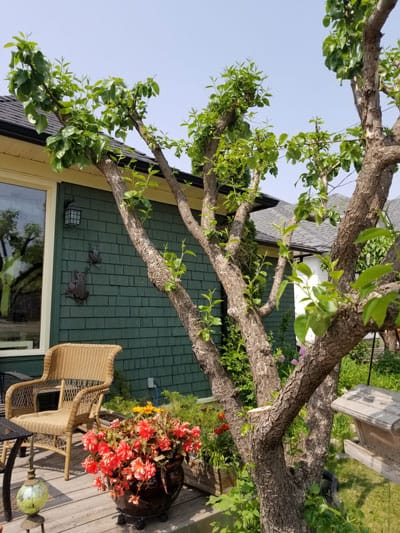
Notice the shoots growing all along the branches as this tree tries to recover from heading cuts.
No Flush Cuts
One of the most common pruning mistakes is the flush cut. This occurs when you cut a branch off flush with the bark of the tree trunk or larger branch to which it’s attached.
While it may look clean and streamlined, a flush cut removes the branch collar, an area of tissue that’s needed to form a seal over the pruning cut. Because the plant cannot close over the wound, a flush cut leaves an opening for pests and pathogens to enter the plant and damage or kill it.
How to avoid a flush cut: Identify the branch collar, an enlarged area around the base of a branch, and cut just beyond it. A pruning cut made here stimulates the tissue in the branch collar to grow over and seal the wound.
No Stub Cuts
Stub cuts are the opposite of flush cuts; they leave a protruding branch stub long enough that the branch collar cannot grow over it.
A rule of thumb to avoid stub cuts: If you can hang a hat on a branch stub, it’s too long.
No Lion Tailing
Another common mistake is “lion tailing,” removing interior branches and keeping leaves and growth only at branch ends. This practice is not recommended because it:
- Removes too much foliage (which the tree needs for photosynthesis)
- Compromises the structure of the tree by redistributing weight to the ends of branches
- Leaves the crown open to wind damage and sun scald, and
- Increases reaction, or stress-response, growth sprouts (“watersprouts”) along the trunk and branches. These reaction sprouts are a sign of over-pruning – the tree is putting out new growth quickly in an attempt to generate energy through photosynthesis.
No Heading Cuts
Heading cuts, particularly on large branches, are damaging both structurally and aesthetically.
A heading cut chops off the end of a branch at an indiscriminate point, or at a branch junction that leaves only an undersized side branch growing in another direction.
If you make a pruning cut at an indiscriminate branch point, it stimulates the growth of many small branches around the wound that are not strongly attached and do not follow natural branch growth. Leaving only a small branch at the end of a large branch heading cut is both aesthetically unattractive and risks the small branch growing up and out from an unstable branch stub.
If you’ve ever seen a forsythia that’s been sheared or a topped tree, then you know that heading cuts generally don’t work out well. The mass of spindly branches that erupt from the cut branches not only look bad, but they’re prone to breaking off and will require more frequent pruning to keep them in check.
There are a few situations where heading cuts are the right choice, but that’s a decision best left to a Certified Arborist who understands exactly when, where and why to make those cuts.
Use the 3-Cut Method
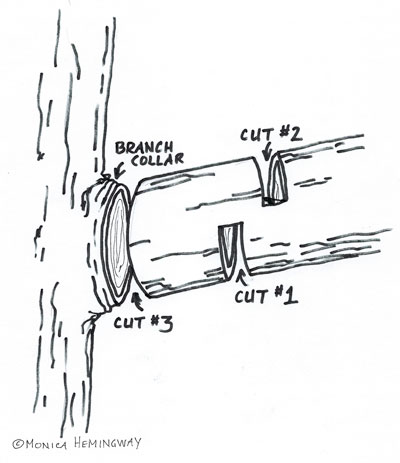
The 3-cut pruning method ensures that larger branches are cut off cleanly, without any torn bark.
We often see torn bark on trees that have had large branches removed by a non-professional. Usually, that’s because they made the common pruning mistake of cutting off the branch with only one cut.
All pruning cuts on large branches should follow the three-step process:
- First, make a shallow cut on the underside of the branch, one or two inches beyond the branch collar. This will act as a barrier, preventing a bark tear if the branch falls while being cut.
- Second, cut through the branch two to four inches beyond the branch collar, removing the branch and leaving a stub.
- Finally, cut the stub off by cutting through the branch just beyond the branch collar.
Use the Right Pruning Tools
There are four types of tools used for pruning: pruning shears, loppers, pruning saws, and chainsaws. The larger the branch that’s being cut, the more powerful the tool should be. For example, hacking your way through a 3-inch branch with a lopper is likely to end in frustration and a butchered branch that’s vulnerable to diseases and pests. Make sure all cutting tools are sharp, properly tuned and the right size for the job.
A Final Word On Pruning
Familiarity with a plant’s flowering and branching patterns makes for the best pruning. Different species require different types of pruning, and all pruning should be minimal, removing only what is required.If you feel overwhelmed by the requirements of pruning, or want to correct pruning mistakes, hire a Certified Arborist to do the job. Not only is it safer and healthier for the tree, in the long run it's also better for your wallet.
Recent Articles
Topics
About The Author

STAY IN THE LOOP
WITH OUR
LATEST UPDATES
"*" indicates required fields

